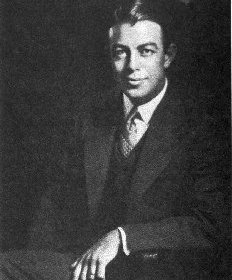
Benjamin Lee Whorf was an American linguist and fire prevention engineer who is famous for proposing the "Sapir–Whorf hypothesis." He believed that the structures of different languages shape how their speakers perceive and conceptualize the world. Whorf saw this idea, named after him and his mentor Edward Sapir, as having implications similar to Einstein's principle of physical relativity. However, the concept originated from 19th-century philosophy and thinkers like Wilhelm von Humboldt and Wilhelm Wundt.
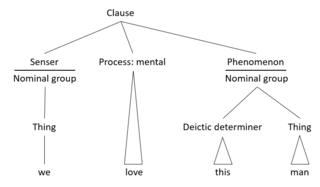
Functional linguistics is an approach to the study of language characterized by taking systematically into account the speaker's and the hearer's side, and the communicative needs of the speaker and of the given language community. Linguistic functionalism spawned in the 1920s to 1930s from Ferdinand de Saussure's systematic structuralist approach to language (1916).

Language is a structured system of communication that consists of grammar and vocabulary. It is the primary means by which humans convey meaning, both in spoken and written forms, and may also be conveyed through sign languages. The vast majority of human languages have developed writing systems that allow for the recording and preservation of the sounds or signs of language. Human language is characterized by its cultural and historical diversity, with significant variations observed between cultures and across time. Human languages possess the properties of productivity and displacement, which enable the creation of an infinite number of sentences, and the ability to refer to objects, events, and ideas that are not immediately present in the discourse. The use of human language relies on social convention and is acquired through learning.
The following outline is provided as an overview and topical guide to linguistics:
The idea of linguistic relativity, also known as the Sapir–Whorf hypothesis, the Whorf hypothesis, or Whorfianism, is a principle suggesting that the structure of a language influences its speakers' worldview or cognition, and thus individuals' languages determine or shape their perceptions of the world.
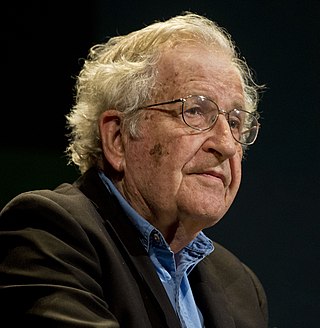
Universal grammar (UG), in modern linguistics, is the theory of the innate biological component of the language faculty, usually credited to Noam Chomsky. The basic postulate of UG is that there are innate constraints on what the grammar of a possible human language could be. When linguistic stimuli are received in the course of language acquisition, children then adopt specific syntactic rules that conform to UG. The advocates of this theory emphasize and partially rely on the poverty of the stimulus (POS) argument and the existence of some universal properties of natural human languages. However, the latter has not been firmly established, as some linguists have argued languages are so diverse that such universality is rare, and the theory of universal grammar remains controversial among linguists.
Linguistics is the scientific study of human language. Someone who engages in this study is called a linguist. See also the Outline of linguistics, the List of phonetics topics, the List of linguists, and the List of cognitive science topics. Articles related to linguistics include:
Psycholinguistics or psychology of language is the study of the interrelation between linguistic factors and psychological aspects. The discipline is mainly concerned with the mechanisms by which language is processed and represented in the mind and brain; that is, the psychological and neurobiological factors that enable humans to acquire, use, comprehend, and produce language.

Generative grammar, or generativism, is a linguistic theory that regards linguistics as the study of a hypothesised innate grammatical structure. It is a biological or biologistic modification of earlier structuralist theories of linguistics, deriving from logical syntax and glossematics. Generative grammar considers grammar as a system of rules that generates exactly those combinations of words that form grammatical sentences in a given language. It is a system of explicit rules that may apply repeatedly to generate an indefinite number of sentences which can be as long as one wants them to be. The difference from structural and functional models is that the object is base-generated within the verb phrase in generative grammar. This purportedly cognitive structure is thought of as being a part of a universal grammar, a syntactic structure which is caused by a genetic mutation in humans.
A linguistic universal is a pattern that occurs systematically across natural languages, potentially true for all of them. For example, All languages have nouns and verbs, or If a language is spoken, it has consonants and vowels. Research in this area of linguistics is closely tied to the study of linguistic typology, and intends to reveal generalizations across languages, likely tied to cognition, perception, or other abilities of the mind. The field originates from discussions influenced by Noam Chomsky's proposal of a Universal Grammar, but was largely pioneered by the linguist Joseph Greenberg, who derived a set of forty-five basic universals, mostly dealing with syntax, from a study of some thirty languages.
In linguistics, linguistic competence is the system of unconscious knowledge that one knows when they know a language. It is distinguished from linguistic performance, which includes all other factors that allow one to use one's language in practice.
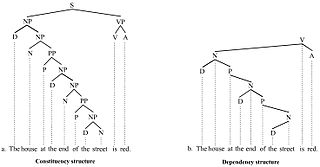
In linguistics, a treebank is a parsed text corpus that annotates syntactic or semantic sentence structure. The construction of parsed corpora in the early 1990s revolutionized computational linguistics, which benefitted from large-scale empirical data.
Bootstrapping is a term used in language acquisition in the field of linguistics. It refers to the idea that humans are born innately equipped with a mental faculty that forms the basis of language. It is this language faculty that allows children to effortlessly acquire language. As a process, bootstrapping can be divided into different domains, according to whether it involves semantic bootstrapping, syntactic bootstrapping, prosodic bootstrapping, or pragmatic bootstrapping.
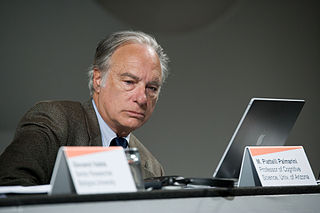
Biolinguistics can be defined as the study of biology and the evolution of language. It is highly interdisciplinary as it is related to various fields such as biology, linguistics, psychology, anthropology, mathematics, and neurolinguistics to explain the formation of language. It is important as it seeks to yield a framework by which we can understand the fundamentals of the faculty of language. This field was first introduced by Massimo Piattelli-Palmarini, professor of Linguistics and Cognitive Science at the University of Arizona. It was first introduced in 1971, at an international meeting at the Massachusetts Institute of Technology (MIT). Biolinguistics, also called the biolinguistic enterprise or the biolinguistic approach, is believed to have its origins in Noam Chomsky's and Eric Lenneberg's work on language acquisition that began in the 1950s as a reaction to the then-dominant behaviorist paradigm. Fundamentally, biolinguistics challenges the view of human language acquisition as a behavior based on stimulus-response interactions and associations. Chomsky and Lenneberg militated against it by arguing for the innate knowledge of language. Chomsky in 1960s proposed the Language Acquisition Device (LAD) as a hypothetical tool for language acquisition that only humans are born with. Similarly, Lenneberg (1967) formulated the Critical Period Hypothesis, the main idea of which being that language acquisition is biologically constrained. These works were regarded as pioneers in the shaping of biolinguistic thought, in what was the beginning of a change in paradigm in the study of language.
In linguistics, grammaticality is determined by the conformity to language usage as derived by the grammar of a particular speech variety. The notion of grammaticality rose alongside the theory of generative grammar, the goal of which is to formulate rules that define well-formed, grammatical, sentences. These rules of grammaticality also provide explanations of ill-formed, ungrammatical sentences.
In linguistics, well-formedness is the quality of a clause, word, or other linguistic element that conforms to the grammar of the language of which it is a part. Well-formed words or phrases are grammatical, meaning they obey all relevant rules of grammar. In contrast, a form that violates some grammar rule is ill-formed and does not constitute part of the language.
Linguistics is the scientific study of language. The modern-day scientific study of linguistics takes all aspects of language into account — i.e., the cognitive, the social, the cultural, the psychological, the environmental, the biological, the literary, the grammatical, the paleographical, and the structural.

Aspects of the Theory of Syntax is a book on linguistics written by American linguist Noam Chomsky, first published in 1965. In Aspects, Chomsky presented a deeper, more extensive reformulation of transformational generative grammar (TGG), a new kind of syntactic theory that he had introduced in the 1950s with the publication of his first book, Syntactic Structures. Aspects is widely considered to be the foundational document and a proper book-length articulation of Chomskyan theoretical framework of linguistics. It presented Chomsky's epistemological assumptions with a view to establishing linguistic theory-making as a formal discipline comparable to physical sciences, i.e. a domain of inquiry well-defined in its nature and scope. From a philosophical perspective, it directed mainstream linguistic research away from behaviorism, constructivism, empiricism and structuralism and towards mentalism, nativism, rationalism and generativism, respectively, taking as its main object of study the abstract, inner workings of the human mind related to language acquisition and production.
The Integrational theory of language is the general theory of language that has been developed within the general linguistic approach of integrational linguistics.







